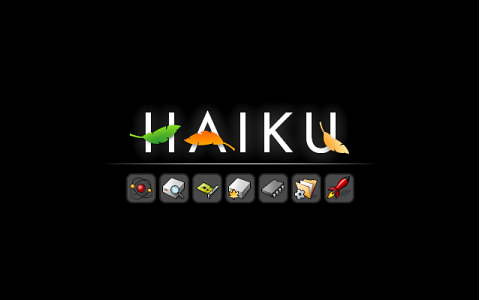Загрузчик (Boot Loader)
Загрузчик Haiku может помочь решить аппаратные проблемы или выбрать, какую из систем запустить для установки, если у вас более одной копии Haiku (установочный CD или USB-флэшка). Загрузчик также полезен в случае, когда установленный программный компонент препятствует успешной загрузке системы, о чем подробнее написано в Исправлении проблем.
Для того чтобы зайти в настройки загрузчика, необходимо нажать и удерживать клавишу SHIFT до начала загрузки Haiku. Если загрузчик установлен, то вы можете начать удерживать SHIFT перед выбором загрузочной записи Haiku, а если она является единственной операционной системой на компьютере, то вы можете начать удерживать клавишу во время стартовых сообщений BIOS.
 Опции загрузчика
Опции загрузчика
Вы увидите три пункта меню:
| Выбор загрузочного раздела (Select boot volume) | Выбор конкретной инсталляции/версии Haiku для старта. | |
| Выбор опций безопасного режима (Select safe mode options) | Здесь находится несколько опций, которые могут помочь с решением аппаратных проблем или же побороть нестабильную работу системы в случае некорректно ведущего себя адд-она. При выборе опции в нижней части экрана отображается её краткое описание. | |
|
| ||
| Select debug options | Here you'll find several options that help with debugging or getting details for a bug report. Again, a short explanation for each option is displayed at the bottom. | |
|
| ||
| If "Enable debug syslog" is activated, a warm reboot after a crash shows these additional options: | ||
|
| ||
| Select screen resolution | Lets you force a certain screen resolution and color depth. |
 Исправление проблем
Исправление проблем
If Haiku refuses to boot on your hardware from the get-go, try out setting different options under . Consider filing a bug report in any case.
On the other hand, if Haiku only suddenly acts up after you have installed some software, especially hardware drivers, you have several options to get Haiku bootable again so you can uninstall the offending package:
Activating will prevent most servers, daemons and the UserBootScript from being started.
Activating will prevent using any add-ons (drivers, translators, etc.) you have installed in the user hierarchy under your Home folder.
If the offending driver, add-on etc. is installed in the system hierarchy, things get a bit more complicated, because that area is read-only. Here, the comes into play. With it, you can navigate through the whole system hierarchy and disable the component that's messing things up for you by checking an entry with the SPACE or RETURN key. ESC returns you up one level to the parent directory.
Online, there's the article How to Permanently Blacklist a Package File showing how to make that setting stick.
Under you can specify what former "version" of Haiku to boot. Every time you un/install a package, the old state is saved and you can boot into it by choosing it from the list presented in the boot loader options.
So, if you encounter boot problems after installing some package, boot a Haiku version from before that time and uninstall the offending package.
 Загрузка Haiku
Загрузка Haiku
После активации одной или более опций вернитесь в главное меню и продолжите загрузку. Далее вы увидите загрузочный экран:

Если все в порядке, то иконки будут быстро загораться, одна за другой.
Каждая иконка соответствует определенному этапу загрузки:
| Атом | Инициализация модулей. | |
| Диск с лупой | Создание корневой файловой системы (/) и монтирование файловой системы устройств (/dev). | |
| Карта расширения | Инициализация менеджера устройств. | |
| Загрузочные диск | Монтирование загрузочного диска. | |
| Чип | Загрузка модулей процессора. | |
| Папка | Финальная инициализация подсистем. | |
| Ракета | Демон загрузки Launch_daemon запускает систему. |
 Русский
Русский Català
Català Deutsch
Deutsch English
English Español
Español Français
Français Italiano
Italiano Magyar
Magyar Polski
Polski Português
Português Português (Brazil)
Português (Brazil) Română
Română Slovenčina
Slovenčina Suomi
Suomi Svenska
Svenska 中文 [中文]
中文 [中文] Українська
Українська 日本語
日本語